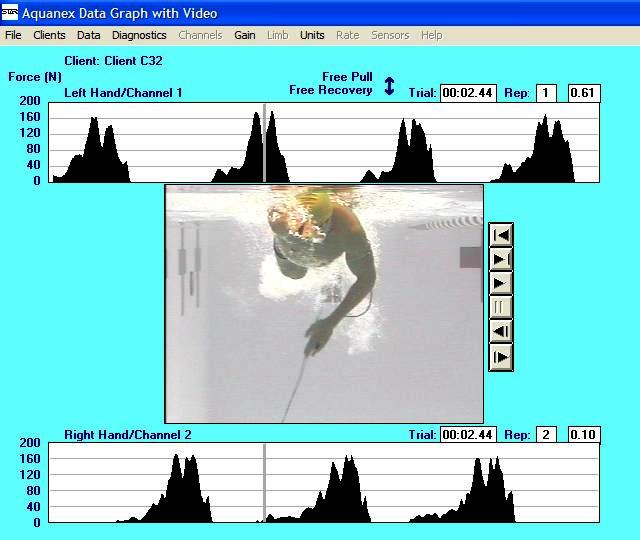The active drag coefficient (Cd) is the overall best measure of a swimmer’s technique. The more effective the technique, the lower the Cd. There is a considerable range of Cd values – from over 2.0 for a very ineffective technique to under .7 for very effective technique. An average value for freestyle for competitive swimmers is 1.0. Values under .7 are rare.
Mean (M) values for the Cd for 40 university male and female swimmers is shown in the table below. The sample was divided into the 20 faster and 20 slower swimmers for each sex.
| Males | Females | |||
| Faster | Slower | Faster | Slower | |
| Butterfly | .89 | 1.16 | .93 | 1.10 |
| Backstroke | 1.10 | 1.35 | 1.11 | 1.23 |
| Breaststroke | 1.44 | 1.83 | 1.36 | 1.68 |
| Freestyle | .92 | 1.07 | .92 | 1.07 |
The Cd is calculated from the drag equation: F = .5 ρv2CdX, where F is the average force, .5 and ρ are constants, v is swimming velocity, and X is the cross-sectional area of the body.
A standard Aquanex test trial measures F and v. Aquanex sensors measure hand force throughout the range of motion of each stroke so that F can be calculated. Swimmers are timed over a measured distance (usually 10 yards or meters) so that v can be calculated. (X is calculated from a swimmer’s height and weight.) At the completion of a trial, the Cd is automatically calculated.
Once a swimmer has mastered a number of basic skills, measurement of the Cd is essential to quantify the effectiveness of technique. The Cd indicates the skill level and is also the best way to track skill development and progress.

